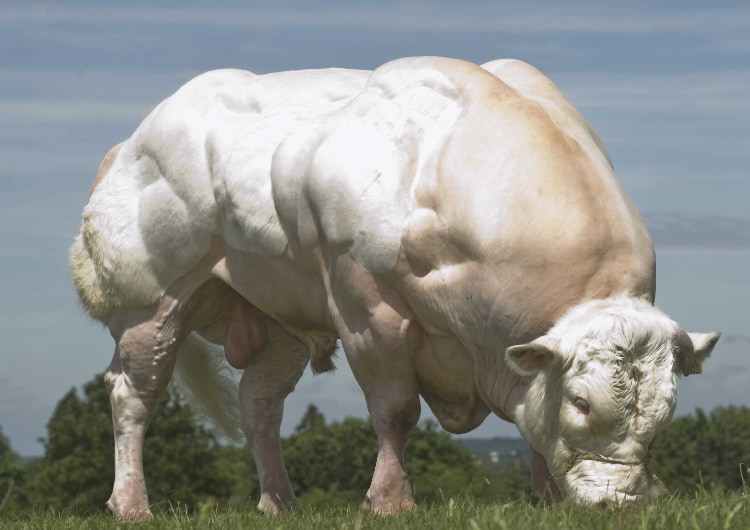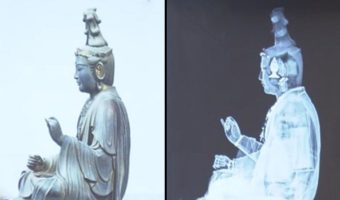Bull Born Without Myostatin Gene Displays Remarkable Muscle Growth
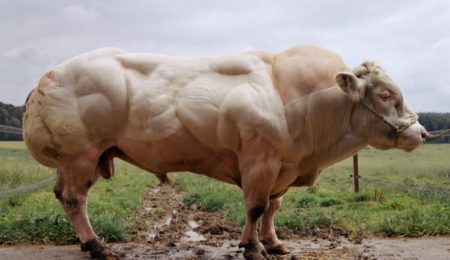
Most gym rats undergo years of discipline and hard training to build up those massive muscles. After all, it requires blood, sweat, and tears to achieve a perfectly shredded physique that most can only dream about. But what if you could naturally have a lean body with pure muscles? At least, that’s how it is for Belgian blue bulls! This bull with massive muscles has left netizens scratching their heads in disbelief. Read on to know what causes Belgian blue bulls to have such massive proportions.
Table of Contents
What causes the Belgian blue bull to have such massive muscles?
Belgian blue bulls are, for the most part, like any other breed of bull, except that they have enormous muscles that other bulls do not. The huge muscle mass of Belgian blue bulls makes them look like a genetically engineered cattle breed, but interestingly, they are all natural! The phenomenon that causes this breed of bull to have massive muscles is a mutation in genes called “double muscling.”
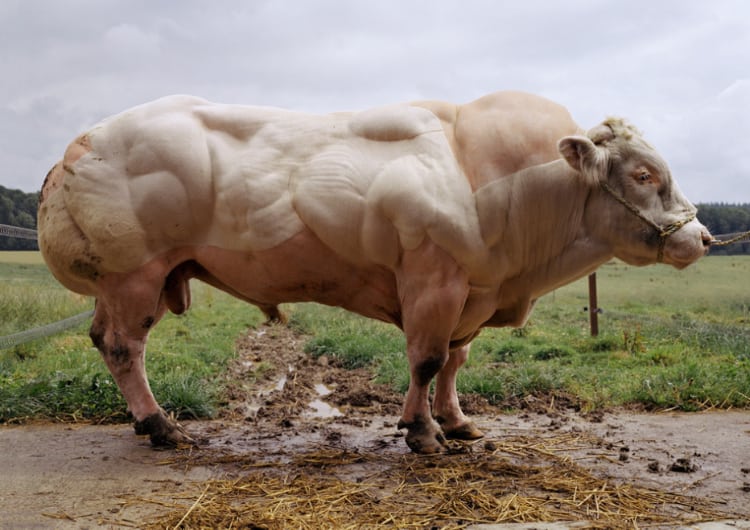
Double muscling occurs when a mammal lacks a certain protein called “myostatin,” which is responsible for regulating muscle growth. A mutation in the MSTN gene, which encodes the myostatin protein, can lead to decreased myostatin production or function, resulting in increased muscle growth.
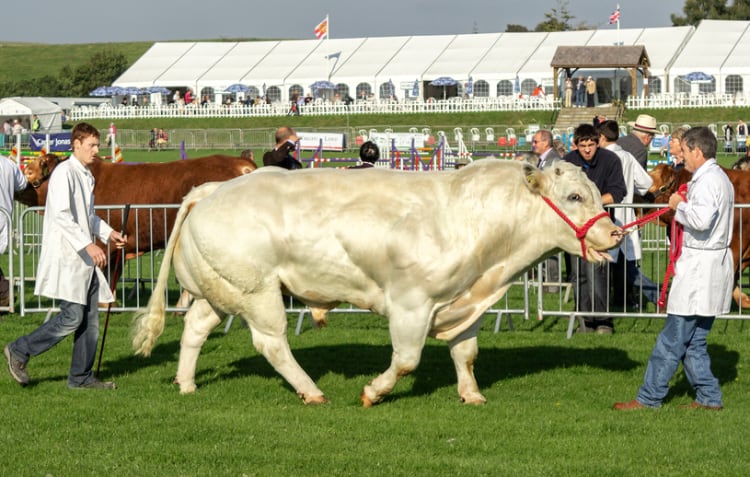
The condition is scientifically known as “myostatin hypertrophy.” It is a very rare condition, and the affected animals, like the Belgian blue bulls, can have as much as twice the usual muscle mass and enhanced muscle strength.
Why is myostatin so important in mammals?

As stated earlier, myostatin is the protein that regulates muscle growth in animals. However, that’s not the only job of myostatin. It belongs to the transforming growth factor-beta (TGF-beta) family of proteins and is produced primarily in skeletal muscle cells.
Myostatin plays a vital role in controlling the size of muscles throughout the body by inhibiting muscle cell growth and differentiation. This protein is secreted by muscle cells and travels through the bloodstream to the muscle stem cells known as “satellite cells.” Myostatin then attaches to these satellite cells and inhibits their growth and proliferation, ultimately limiting muscle growth.
In addition to its role in regulating muscle size, myostatin also plays a crucial role in maintaining muscle quality. It helps to prevent the accumulation of damaged or dysfunctional muscle fibers, which can lead to muscle wasting and weakness.
Can humans also get the same gene mutation as the bull with massive muscles?

Myostatin hypertrophy can affect any mammal, including humans as well. While it is incredibly rare in humans, there have been a few documented cases of people with this condition. One such case is Nguyen Hoang Nam, a Vietnamese kid.
Nguyen’s photos went viral on the Internet for having incredible muscles at a very young age! He was diagnosed with myostatin hypertrophy at the age of six when his muscles began to look much more prominent for his age. Many people on social media mistake him for being a fit adult with dwarfism. Not just that, the boy was not known to develop any medical problems due to his condition.
Another recorded case is of Liam Hoekstra, who was once regarded as the strongest toddler. Liam had an unusual amount of strength and muscle mass from a very young age. He was able to do push-ups and pull-ups at a remarkably young age, and his muscles, like biceps, triceps, and abs, were much larger and more prominent than those of other children his age.
Just like the bull with massive muscles, here are some more intriguing cases of myostatin deficiency
1 Wendy the Whippet was so shredded that it could put a lot of muscular dog breeds to shame!
Wendy the Whippet was a remarkable dog who captured the hearts of many people with her incredible physique and impressive performance in dog competitions. Known for her muscular build due to myostatin hypertrophy, Wendy was a unique and rare specimen of her breed that stood out from the rest.
Wendy was so huge that she was often regarded as the “Arnold Schwarzenegger of dogs.” With a lean muscle mass of 27 kg, Wendy’s weight was about double that of an average whippet. The muscles around her neck and back were so prominent that they resembled a lion’s mane.
Wendy’s popularity made her a recognizable figure around the world. She was featured in several magazines, TV shows, and other media outlets. Sadly, Wendy passed away at the age of 14 in 2017.
2 This cat with myostatin hypertrophy looks like a regular gym goer!
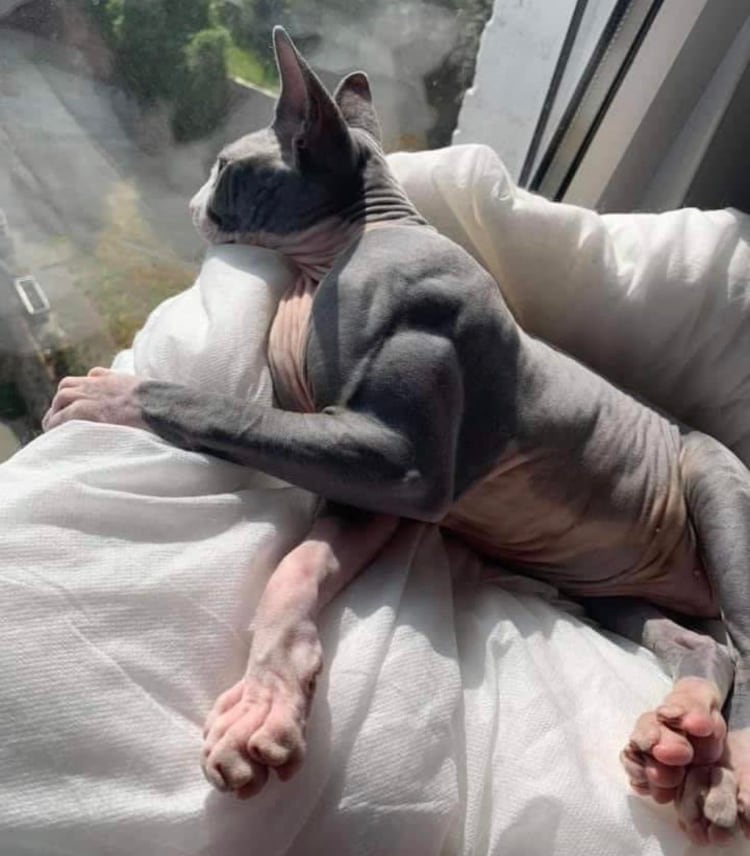
The picture of this house cat with exceptionally well-defined and its huge muscles has amazed thousands of social media users. Just like the bull with massive muscles, this cat also has double muscling or myostatin hypertrophy.
The feline has taken the Internet by storm, and its post on a subreddit has got more than 88k upvotes! While some people perceive the cat to have an unusual and startling appearance, it is pertinent to mention that it is perfectly fine, free of pain, and thriving.
Overall, the cat’s appearance is quite unusual and remarkable. The cat’s legs are particularly notable, appearing much thicker and more muscular than a typical domestic cat. The cat’s abdomen and chest also appear to be more defined than an average cat’s, and the muscles in its face and neck also seem more pronounced. Not just that, even the toes seem to be buffed up!
3 Eddie Hall’s massive physique and exceptional strength are also the results of myostatin deficiency.

Eddie Hall, also known as “The Beast,†is a former professional strongman who gained worldwide attention for winning the 2017 World’s Strongest Man competition.
However, Eddie’s unique genetic makeup sets him apart from other athletes. This gene mutation, known as myostatin hypertrophy, inhibits muscle growth in the body. As a result, individuals with this mutation, like Eddie, have increased muscle mass and strength. Moreover, that’s one of the reasons why Hall, who weighs over 400 pounds, is able to deadlift over 1,100 pounds and squat over 1,000 pounds.
Despite his genetic advantage, Hall’s success didn’t come easy. He trained tirelessly for years and pushed his body to the limit to achieve his goals. In addition, his extreme size and weight have taken a toll on his body, leading to many injuries and health issues.














